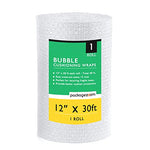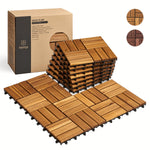You have no items in your shopping cart.
Understanding the Thickness of Mil Measurements
Have you ever come across the terms "2 mil" or "4 mil" and wondered what they actually mean? When it comes to measuring thickness, the concept of mil can be a bit confusing. In this article, we'll dive into the world of mil measurements and explore the difference between 2 mil and 4 mil. So, let's get started and find out which is thicker: 2 mil or 4 mil?
Introduction
When discussing the thickness of certain materials, such as plastic films or sheets, the unit of measurement known as "mil" often comes up. Mil is an abbreviation for "thousandth of an inch" and is used to quantify the thickness of various materials. For example, 2 mil indicates a thickness of 0.002 inches, while 4 mil represents a thickness of 0.004 inches. In simpler terms, the higher the mil value, the thicker the material.
What is thicker 2 mil or 4 mil?
To answer the question directly, 4 mil is thicker than 2 mil. Since mil is a unit of measurement where a higher value represents a greater thickness, 4 mil is twice as thick as 2 mil. It's important to note that the difference between these two measurements may seem small, but it can have significant implications depending on the application and material being considered.
When comparing two materials with the same width but different mil thicknesses, the one with the higher mil value will be more durable and resistant to wear and tear. This is because a thicker material is inherently stronger and less prone to damage. However, the specific characteristics and properties of the material should also be taken into account, as they can influence its overall strength and suitability for different purposes.
FAQs about Mil Thickness
1. What does "mil" stand for?
Mil is an abbreviation for "thousandth of an inch." It is a unit of measurement used to express the thickness of various materials.
2. How do you convert mil to inches?
To convert mil to inches, divide the mil value by 1000. For example, 2 mil is equal to 0.002 inches.
3. Which materials are often measured in mil?
Materials such as plastic films, sheets, and certain types of packaging are commonly measured in mil.
4. Does a higher mil value always mean better quality?
While a higher mil value generally indicates a thicker and more durable material, it doesn't necessarily mean better quality. The specific properties and characteristics of the material should also be considered.
5. Can mil thickness vary across different materials?
Yes, mil thickness can vary depending on the type of material being measured. Different materials have different properties and may require varying thicknesses to achieve the desired level of strength and durability.
6. Are there other units of measurement for thickness?
Yes, there are other units of measurement for thickness, such as millimeters (mm) and micrometers (µm). These units are commonly used in different regions or industries.
Conclusion
In conclusion, the mil measurement is used to determine the thickness of various materials, such as plastic films and sheets. When comparing 2 mil and 4 mil, the latter is thicker. Remember that a higher mil value generally indicates a thicker and more durable material. However, it's essential to consider the specific properties and characteristics of the material in question, as they can impact its overall strength and suitability for different applications.
Understanding mil thickness is valuable when choosing materials for specific purposes, such as packaging, construction, or manufacturing. By grasping the concept of mil and knowing how it relates to thickness, you can make informed decisions about the materials you use and ensure they meet your requirements.
So, the next time you encounter the terms 2 mil or 4 mil, you'll have a clear understanding of their significance. Knowledge of mil measurements empowers you to choose the right materials for your projects and ensures that you're well-equipped to make informed decisions in various contexts.








